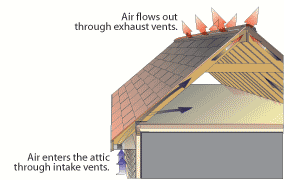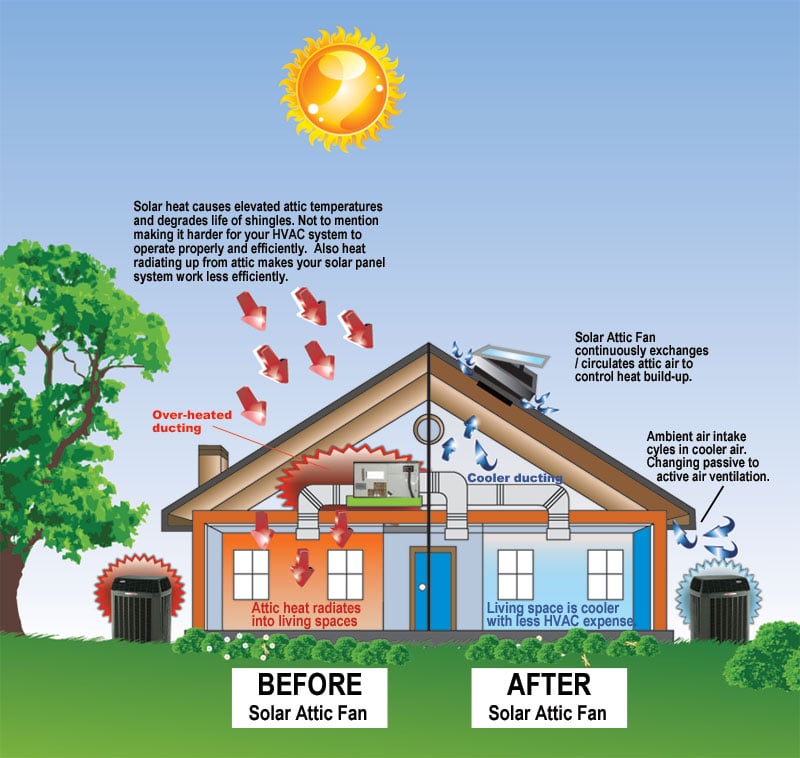According to the home ventilating institute hvi powered attic ventilators need to move a minimum of 700 cubic feet per minute cfm for 1 000 sq.
Open aur needed fir attic exhaust.
Cool air in hot air out attic ventilation works on the principle that heated air naturally rises primarily utilizing two types of vents.
You can also contact your local municipality to check on building code in your area.
Ventilation of attic spaces is required by most building codes as well as by roofing material manufacturers and the national roofing contractors association nrca.
2 200 2 1 100 square inches of exhaust net free area needed.
Intake vents located at the lowest part of the roof under.
This allows cool dry air to enter the attic at the lowest point helping to remove any warm moist air from inside the attic through the exhaust vents along the entire underside of the roof deck.
Most building codes require a ratio of 1 150 ventilation space to attic floor space.
The following product options will allow you to achieve an exhaust nfva of 528 square inches.
Say the contractor is standing in front of a house that has an attic with 2 200 square feet.
Ravc member companies have an extensive offering of intake and exhaust vents.
Select your preferred type of exhaust system.
Ft of attic space for example 20 x 50 to be effective.
Dry air to enter the attic.
Federal housing authority recommends a minimum of at least 1 square foot of attic ventilation evenly split between intake and exhaust for every 300 square feet of attic floor space.
Here s an example using the shortcut for the 1 150 code minimum.
Ideally there should also be plenty of soffit intake space their calculations recommend 336 net square inches of open soffit ventilation to supply 700 cfm.
In no case should the amount of exhaust ventilation exceed the amount of intake ventilation.
Attic square footage 4 square inches of exhaust and square inches of intake net free area needed.





























